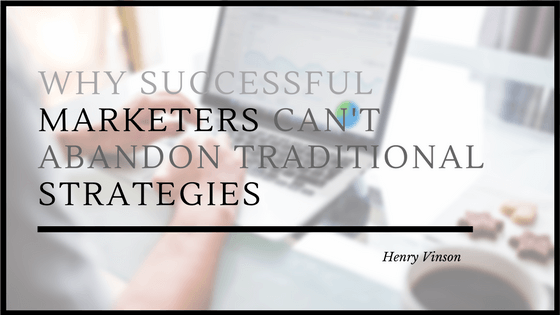From the early stages of businesses selling products, the initial factor consumers were focused on was the product quality. No matter the brand, as long as the product was high quality, a consumer would assume it’s a good purchase. However, having better quality than the competition is simply not enough in today’s digital age.
Today consumers are looking for good quality with a positive brand. Traditional marketing has been viewed as only a setback to a company building the products and brand in the eyes of consumers. Although some marketing strategist might think of traditional marketing as dead, it is alive and well– but it simply can’t be the only form of marketing in a business today. Here’s a look into why successful marketing has to turn away from just implementing traditional styles, and taking on a more complex strategy.
It’s All in the Data
Over the past several years, marketing has taken a strong digital turn. However, digital marketing can become pricey compared to the affordable methods of traditional marketing. For a company to market to it’s target audience most efficiently, a steady combination of both digital and traditional marketing are necessary.
Here’s a list of the most effective B2C marketing strategies driven by data. On this list, you’ll find both digital and traditional methods. A strong and successful marketing strategy will have a combination of both methods.
Snail Mail Still Brings in Sales
Many businesses are known for an email sign up that provides consumers with great discounts, conveniently sent to their inbox whenever there is an in-store or online sale. This form of coupons and discounts didn’t emerge until the 1990’s when the internet drastically changed marketing in it’s entirety.
Today, when a customer signs up to receive discounts from a store, they enter their address as well as their email address. Direct mail marketing is still a major form of advertizing that brings traffic to businesses both in-store and online. The most typical form of this marketing is usually a promotional offer and provides consumers with a physical discount rather than an email offer.
Generational Factors
When implementing any marketing strategy, there is always a target audience in mind. The two up and coming generations are Generation Y and Generation Z. Millennials are also known as Generation Y, and refer to current young adults born in the 1980s to early 1990s and are the most talked about generation of all. In addition to millennials we have Generation Z which are people born between 1996 and 2010. To market to this generation, the most influential method is hands down digital based.
However, we still have generations such as the Baby Boomers (1946-1964) and the Silent generation (1925-1945) that are target audiences as well. These older generations easily prefer more traditional methods of marketing due to a lack of knowledge and trust in digital means.
To market to each generation and personal preference of consumers, marketing strategies simply can’t eliminate traditional methods. In order to have a successful marketing plan, a solid combination of digital and traditional marketing is required.

